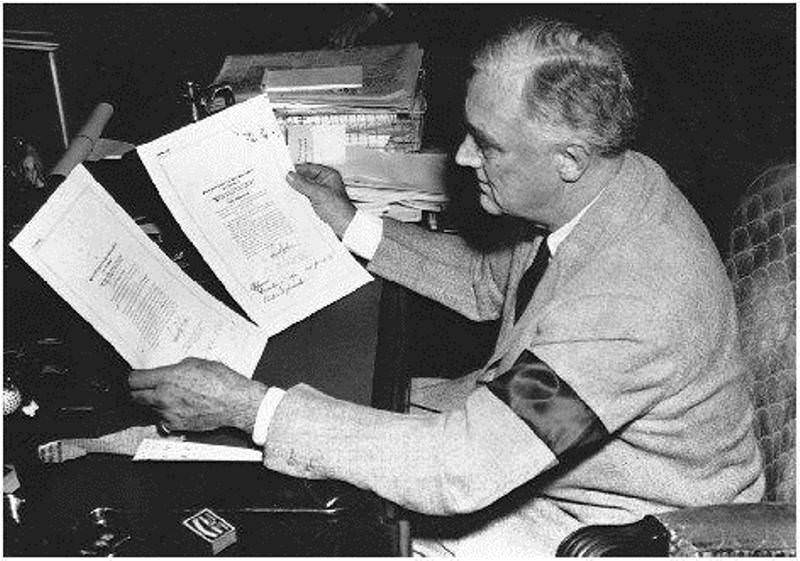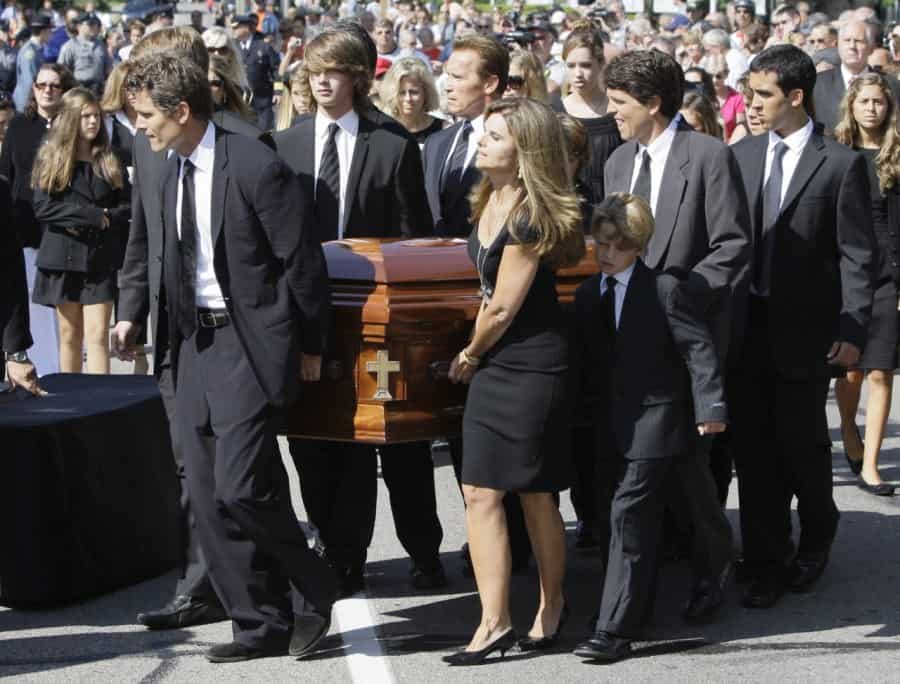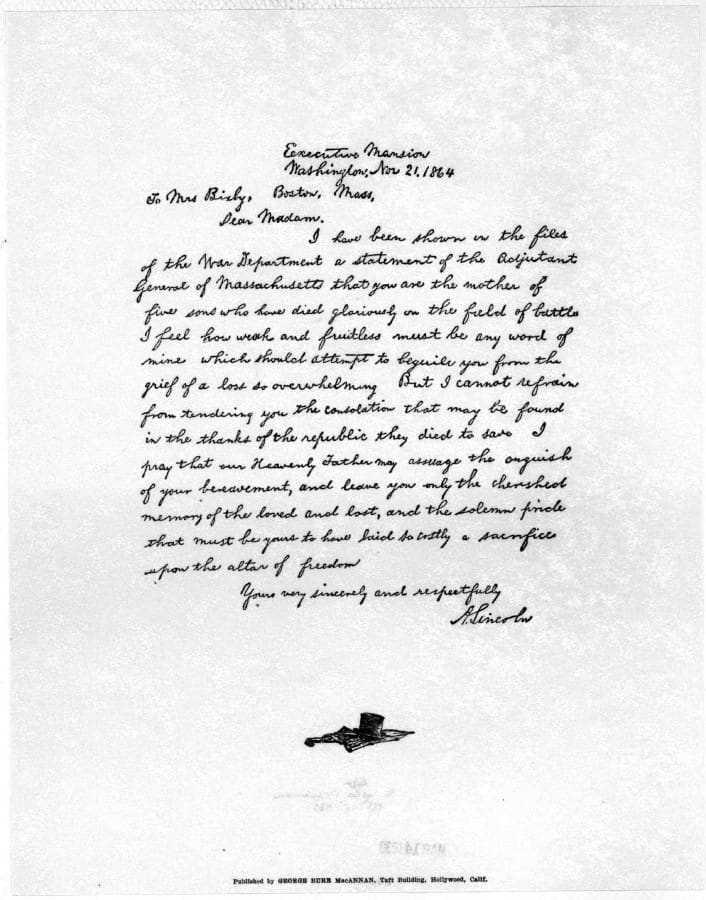The telephone rings early in the morning. It is your sister informing you that great Aunt Hortense has died. You liked Aunt Hortense; but what do you do now?
You are probably wondering, “What do I say?” and “What do I wear?” A few generations ago these questions would not have to be asked, because the rituals surrounding death and grief were rigid and straightforward. Today, with the advent of social media, a wide range of cultural and religious traditions, and the casualization of attire, it’s hard to know how to present yourself well while supporting the bereaved.
In today’s guide, we’ll look at the key things you should do and say in a period of mourning to show your respect for the deceased.
Funeral Etiquette Video
History of Funeral Etiquette: How It Used To Be
Death goes hand in hand with life, but funeral rituals have changed radically over time. The Victorians, for example, rarely if ever talked about sex in polite company, even within the circle of those of their same gender. However, they talked about death incessantly and developed rigid customs concerning mourning.
If one’s spouse or parent died, one wore black for a full year and then for six months, “half mourning” which meant gray for men and mauve for women. These traditions carried on well into the twentieth century and for some cultures remain in place today. Presently, there are few carved-in-stone rituals, and people have questions about the etiquette surrounding death.
Gone are the days when a man would wear a black arm band for a six months after losing a parent, spouse or sibling. (Those arm bands though did serve a purpose. They said to the world, “be gentle; this man is grieving.”) However, in the months that follow a loss, one should never be in a hurry to “get back to normal.” The past normal no longer exists. A new normal without a loved one must be found.
Funeral Etiquette
Navigating death is an emotional challenge, and sticking to certain etiquette rules will help everyone feel respected, and ultimately a bit more comfortable during a difficult time. Here are the key etiquette points to abide by:
- Write a Letter of Condolence
- Consider Flowers or a Donation
- Dress Appropriately
- Attend the Service
- Abide by the Cultural or Religious Traditions of the Family
See below for detail on the specific etiquette for each step.
Write a Letter of Condolence
The very first thing that one must do when a death occurs is to acknowledge it. If you learn of the death of someone whom you knew or if you discover that a relative or close friend of a co-worker or friend has died, you at first sit down at your desk, take out paper and an envelope and write a letter of condolence. This is important especially if you are not planning to attend a funeral service or if there is no funeral service. Even if you attend a service, a letter is still a nice gesture. Note that an email, an online post, or a text message simply aren’t good enough; showing respect and sympathy requires more from you. A handwritten letter need not be long or witty, but a sincere message with a personal touch is best.

If you did not know the person well you can simply say something along the lines of, “I was deeply sorry to learn of the death of your aunt. Please accept my heartfelt sympathy. You and your family and are in my thoughts and prayers.” Just make sure to be genuine. If you are not religious, drop the prayers. These letters will serve as tangible reminders for the grieving that people care for them or cared for the person they are mourning.
Send Flowers or a Donation
You may want to acknowledge the death of someone in a more tangible manner than just a letter. In years gone by one sent flowers to the funeral home or a mourner’s house. The purpose of the flowers was quite practical. They offset the odor of death and the not-too-perfect embalming process. These days many people regard an overabundance of flowers as an excessive waste of money.

In the death notice or at the funeral home, the names of one or two favorite charities of the deceased are noted in case one would prefer to make a memorial donation rather than sending a spray of flowers. The choice is up to you if you want to make a charitable donation or not and it is up to you ultimately to which charity you would like to donate. The charity will inform the deceased family of the donation, or the funeral home will prepare a list of donors names and addresses. The amount of the gift is never mentioned, if you should make one.
What to Wear to a Funeral or Memorial Service
Without question, a funeral or memorial service calls for a suit. This is not the occasion to experiment with the dress code (unless the family has explicitly stated you should wear something else). Conveying sympathy and respect is your primary goal, and a simple dark suit is the best choice. Even if you don’t wear suits often, every man should have one dark suit on hand for occasions such as a funeral.

- A black suit is the first choice, but a navy suit or a charcoal gray suit (even a midnight-blue pin stripe in a pinch) are all acceptable
- Black leather cap toe oxfords, wholecuts, or wing tips
- Solid white shirt with French cuffs because it suits the formality of the event
- A conservative tie, such as solid black grenadine or an understated silk Prince of Wales check
- Accessorize with a simple white linen pocket square (which you can learn how to fold here) and dark over-the-calf socks

What Not to Wear to a Funeral
As you can see, appropriate funeral attire is conservative and though formality is generally decreasing, we believe it’s always a good idea to dress up in situations that require respect and sympathy. Here are a few things to avoid with your attire:
- DON’T wear anything in a bright or bold color unless the culture or dress code specifically stipulates such colors
- DON’t wear casual garments such as jeans, chinos, polo shirts, t-shirts, etc.
- DON’T skip the jacket; wearing just a tie is not enough
- DON’T skip the tie; again, just wearing a jacket is not enough
- DON’T over accessorize; your goal is to look appropriate and understated. Leave your jewelry at home, skip the lapel pin or flower, and
- DON’T wear shoes with rubber or crepe soles, loafers, two-tone shoes, sneakers and sandals of any kind are all too casual
- DON’T skip socks; likewise, don’t wear white or brightly colored socks
What is the Difference Between a Funeral and a Memorial Service?
People ask what is the difference between a “funeral” and a “memorial service.” The answer really lies in whether the deceased is present physically or just in memory. If there is a coffin and a burial following, it is a funeral service. If the burial has taken place or the body has been cremated (with or without an urn present), then it is a memorial service. On occasion, the family may opt for a private funeral service and burial and a public memorial service at a later time. Death notices in newspapers or online at funeral homes will indicate to you what type of service you are attending and where the service will be held.
The traditional funeral service is slowly becoming extinct. It is often replaced with a “celebration of a person’s life.” This is all part and parcel of our death-denying culture. As Ecclesiastes (it’s in the Bible) says, “there is a time to dance and a time to mourn.” A memorial service is not a time to dance. There may be smiles and slight laughs at a funeral as we remember the uniqueness of the person we are gathered to remember, but a Dean Martin-style roast it is not.
Wake or Visitation
A wake or a visitation is a social gathering, often held at the home of the deceased or the funeral home. Often, people who cannot attend the funeral will be able to go to the wake. The main goal of a visitation is to give the group of people who were friends with the deceased a chance to say goodbye in a social context. The same dark suit requirement is also appropriate for wakes, especially evening wakes. However, if the deceased was a member of the police force, firefighters brigade or a sports team at the time of passing, it is not uncommon for teammates or co-workers to wear their uniforms to indicate a sense of kinship and a recognition of the decedent’s life, values, spirit, and commitment.
FUNERAL OR MEMORIAL SERVICE ETIQUETTE
Funerals and memorial services are where the living interact to honor and mourn the dead. It is a time to pay extra attention to etiquette. Here are the main ways you can be respectful of your fellow mourners.
- Attend the service if you were close to the deceased or their family; avoid going if your attendance will make the family uncomfortable
- Arrive 10-20 minutes early for the service to allow time to acknowledge the family and find a seat
- Sign the guestbook
- If you are not part of the close family and friends, do not sit in the first few rows of seats
- Turn your phone on silent and do not use it until you’ve departed the event entirely
- When there is the opportunity to do so, express your sympathy and condolences in a simple way, such as “I’m so sorry for your loss. This must be a difficult time for you.” DO NOT use interaction at a funeral as a way to talk about your own grief or experiences
If you do attend a “celebration” at a location where liquor is served, go easy on it. This would be a time for a dignified response to a person’s life even if he or she was the life of the party. You dress and behave in exactly the same way you would at a traditional funeral. You express your sympathy to the family; you listen to the stories told about your late friend or relative, and then you depart.
Giving a Eulogy

At many funerals today, a close family member or friend is commonly asked to deliver a eulogy. A eulogy is a heartfelt tribute to the one we are there to remember. It is not an opportunity to get one last word in about the deceased. It is not a comedy act. It also is not at all about the speaker. It is about the way the person who died impacted people’s lives. If you are asked to deliver a eulogy, this is your chance to speak about someone in a very dignified manner. Make sure to sit down and take your time when you write it. Find the right balance between grief, cherished memories, and funny occasions. The length should be two letter or DIN A4 pages in standard font size 12 to 14 font. Avoid any remarks about drinking or dating habits of the deceased and do not bring up anything else that could be perceived as embarrassing or disrespectful.
Religious Funeral Services
We cannot be assured any longer that the deceased was involved in any organized religion. If a minister is asked to officiate at the service, he or she is in charge and will ask (or should ask) the deceased loved ones for remembrances of the one who has died. Certain rites of the Church or other religious faiths will be observed. It is quite alright to ask before the service of the funeral director or officiating clergy what to do or expect during the service. Most people are quite open to discussing their religious traditions. Normally, however, all one has to do is to show up, express one’s sympathy to the family, sit down, and observe.
If you are attending a Jewish funeral service, it usually takes place in a Synagogue or funeral home one day after the death, but never happens on the Saturday Sabbath. Men are required to wear a head covering known as a kippah or yarmulke. If you do not own one, one will be provided for you as you enter the sanctuary. Married women are asked to wear headscarves at an Orthodox service. Gentlemen are encouraged to wear dark suits and ties. The service is usually about the same duration as a Christian funeral. If you are able, you will be asked to travel to the graveside for the burial. The casket is lowered and, if you desire, you may join others in the act shoveling soil on the casket. Do not feel obliged to do so. Following the internment, most people will adjourn to a family member’s home and begin a seven-day observation called Shiva. If you missed the funeral service, you might visit the family during this time. Never send flowers to a Jewish funeral. Usually, one makes a donation to a charity or plants a tree in Israel through the Jewish National Fund.
Muslims, like Jews, do not delay in having a funeral service. The funeral service will take place in a Mosque. You will be required to remove your shoes and deposit them in an appropriate location. Therefore, make sure your socks are impeccably clean. Women must wear scarves on their heads. Suits are always dark. Most Muslim men will not be wearing neckties, but if you want to wear a tie, you may. Muslims never embalm, and burial occurs within twenty-four hours of death. A service often occurs after burial.

If you attend a Buddhist funeral, you should wear conservative attire. You will notice that the mourners are wearing white, the traditional mourning color. Do not wear red which is the color for joy and happiness. It is mandatory that you remove your shoes at a Buddhist funeral.
Native American Traditions
Thanks to our reader Evan, here are some guidelines about Native American funerals. Before going to the fire circle, ask someone already in attendance if it is appropriate to enter at that time. Close family and friends may sometimes wish to be alone for hours at a time. Do not wear formal attire. A linen shirt tucked into black jeans is generally the upper limit of formality. When entering the circle, place a pinch of tobacco or whatever offering is provided into the fire. If water is provided, cleanse yourself. Always circle clockwise. Never attempt to tend the fire in any way. Trained tenders will be caring for the fire. When leaving the fire circle, always offer a pinch of tobacco or the alternate offering to the fire. The only interaction permissible with the fire is the offering. Additional offerings may be given, provided they are accompanied by a prayer, generally nonverbal. Always offer your seat to someone who was closer to the departed.
Thank you Notes
If you are in the position of having lost someone, you know how difficult those first few weeks are. Nevertheless, the words and actions of people who have expressed their sympathy to you must be acknowledged. As exhausted as you may be in the weeks that follow a funeral, you need to be spending your time writing letters of thanks to those who wrote you personal letters, sent flowers, or made memorial donations. This is one of the final kind things you can do for your loved one — acknowledging your gratitude to people who knew him or her and responded with a memorial. It is also about telling people that you appreciate their kindness during this trying time. The task of writing thank you letters can be divided up among family members who can write a personal note. In case you don’t know who will be writing, a simple, “on behalf of Hortense’s family, I thank you for your kind donation to St. Philip’s Church” or whatever charity will do.
If you received a letter of condolence, one simply writes something like, “Thank you for your words of sympathy. I gathered strength and encouragement from them.” Pre-printed sympathy cards to which a person just affixes his signature need not be answered, but a personal letter does.
Conclusion
There is an etiquette surrounding death and grief. To those who say that we do not need to do these things ‘nowadays,’ the reply should be: Has death stopped happening and do we no longer mourn? The traditional rites, choice of clothing, and condolences are ways of showing respect to the person who died and to remind us that he or she had a life worth remembering. Funerals are one of the reasons why every man must own one good dark-colored suit. You will be able to wear it on other occasions as well. They also are our ways of offering support to those who miss them the most. Of course, mourning and grief are very personal matters. In any case, Aunt Hortense would approve.
































